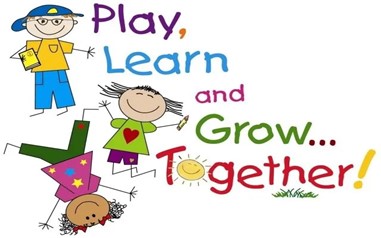
Successful Two-Way Communications with Your Child
Communicating effectively with one’s child is one of the toughest challenges that parents must face. Despite trying to open a two-way communication line with our child, it gets frustrating if we find that their attention is not on the ongoing conversation or on us at all. We complain about broken communication lines when all the time we find it completely all right to converse with them when we are folding clothes, reading the newspaper, writing letters or cooking meals. (“Communicating With Your Child – Tips For Effective Parent …”)
By nature, children get easily distracted and do not always respond as expected to their environment. It becomes the duty of the parents to encourage positive communication patterns and to discourage the act of ignoring communication. (“Communicating With Your Child – Tips for Effective Parent …”)
To make sure that a non-verbal agreement does not ensue, it is important to educate the child on proper communication forms and hence prevent this. Teaching by example is the best method. While conversing, you must direct your complete attention on them and total focus on the conversation. Allow voicemail to take your calls, turn the television off or go to a room with no distractions if that is what it takes. (“Communicating With Your Child – Tips for Effective Parent …”)
You must gently and in age-appropriate terms explain to your child what is wrong with their form of communication and why it does not work. Even when there are tough questions, you must show you child the most effective manner of communication. (“Communicating With Your Child – Tips for Effective Parent …”)
Become a good listener. “You must encourage them to tell their side of the story and to voice their opinions and respond positively to show that you understand their point of view.” (“Communicating With Your Child – Tips for Effective Parent …”)
You must communicate with your child in a consistent manner. You must send out the same signals each time you interact. The child must be allowed to see that you will call their attention whenever unwanted behavior takes place.
Kids are after all kids, and it is normal for them to be non-communicative and non-reactive sometimes. Your child is your domain, and you should know best how to interpret his or her behavior and gauge improvement in communication skills. Modeling positive communication skills is the best way of ensuring that your child imbibes healthy communication patterns. (“Communicating With Your Child – Tips for Effective Parent …”)
The Truth About Lying

Honesty and dishonesty are qualities that a child learns at home. Often parents are perturbed when their child lies. (“The Truth About Lying – Parents Club”)
It is common for young children to tell tall tales and make up stories. This is a normal tendency as kids enjoy telling and hearing stories that are fun. (“Teaching Your Child Honesty – How to Deal with A Lying Child”)
Children often tend to confuse the difference between fantasy and reality. This is more because of an extremely active imagination than of an attempt to hide the truth. (“The Truth About Lying – Parents Club”)
As children get older, they may tell lies to suit their needs, like shirking responsibility and avoiding work. Parents should treat each instance of lying as an isolated one and respond by instructing the child about the necessity of trust and honesty. (“The Truth About Lying – Parents Club”)
Sometimes adolescents feel that it is all right to lie in certain situations like not telling one’s girlfriend or boyfriend the real reason for a breakup as they are afraid of hurting someone else’s feelings. “Adolescents might also lie to retain a sense of privacy and feel psychologically independent of their parents.” (“The Truth About Lying – Parents Club”)
The key role models in a child’s life are his or her parents. When parents catch their child lying, they should approach the matter gently but firmly, emphasizing the difference between a lie and the truth and the necessity for honesty. They should try to communicate to their child and find out the reason for dishonesty and help the child find an alternative. (“The Truth About Lying – Parents Club”)
It is best to lead by example and a parent should never lie, and if they do, emphasize the inappropriateness of it. Consequences of lying must be discussed clearly and in a comprehensive manner with the child early in his or her life. (“The Truth About Lying – Parents Club”)
There are, however, some forms of dishonesty that should cause concern and might be a symptom of some underlying emotional problem. Sometimes children know the difference between a lie and the truth but choose to make up elaborate stories to gain attention. (“Teaching Your Child Honesty – How to Deal with A Lying Child”)
Other adolescents or children, who are sensible, can also fall prey to repetitive lying. It is common for them to feel that a lie is the most convenient method of dealing with the expectations of teachers, parents, and friends. (“Teaching Your Child Honesty – How to Deal with A Lying Child”)
Here the child is not trying to be malicious or bad but just falls into a habit of repetitive lying. If the repetitive lying goes beyond a point, it is best to take it seriously and consult a professional child or adolescent psychologist who can provide help in time. (“The Truth About Lying – Parents Club”)
Best Wishes, Coyalita
Behavioral Health Rehabilitative Specialist
See Tomorrow: “Training the Fussy Eater”
Just use your first name and valid email address – I will never sell or share your email address with anyone. Never. You may unsubscribe anytime. I hate spam just as much as you do.
Leave A Reply




